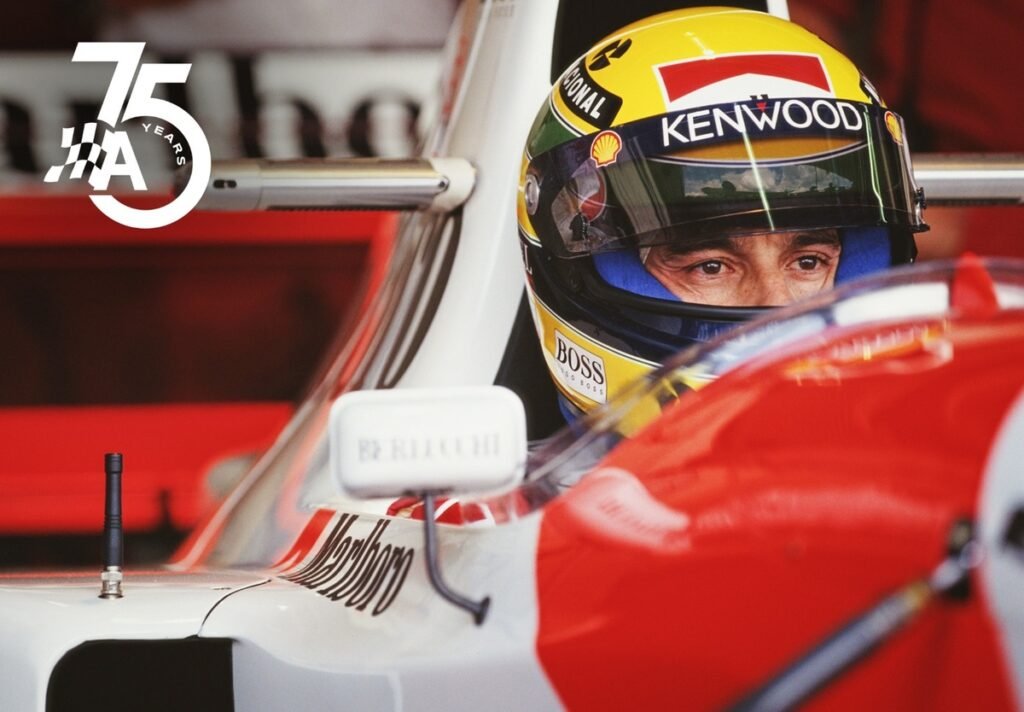Ayrton Senna’s Return to Formula 1: A Test of Speed and Resolve
The atmosphere was tense, yet filled with a sense of anticipation. The temperature hovered just above freezing, and a small group of McLaren team members gathered around the timing desk on the pitwall shortly before lunch. Each time the car roared past, the mechanics would look up, eager to catch the expression on Giorgio Ascanelli’s face—Senna’s Italian engineer, who bore a striking resemblance to a younger Pavarotti. With each lap, Ascanelli would widen his eyes and grin, then signal the pit board operator to update the numbers.
Senna had not driven a Formula 1 car in three months, yet he was already setting the fastest time of the winter. He spent the entire day on Wednesday reacclimating to the speed, even spinning a few times as he explored the new car’s limits. By lunchtime on Thursday, all doubts about the competitiveness of the new McLaren-Ford MP4/8 were dispelled as Senna pushed the car to its limits, recording times of 1m21.2s, 1m21.0s, 1m20.4s, and 1m20.3s. It was a stunning display of consistent speed.
To put Senna’s performance into perspective, Damon Hill had set Williams’s fastest time of the winter at 1m21.0s the day before, while McLaren’s drivers, Michael Andretti and Mika Hakkinen, managed 1m21.5s and 1m21.7s respectively after two weeks of testing the new package. Towards the end of the day, Andretti improved to 1m21.1s, while Senna delivered another mind-blowing sequence: 1m21.0s, 1m20.5s, 1m20.2s.
McLaren had endured a difficult winter, marked by uncertainty over engine suppliers and driver lineups, which had dampened the morale of a dedicated crew used to success. But on this day, they rediscovered their faith. As they packed away the piles of electronic equipment ready for South Africa, they were left wondering whether Senna would join them for the first race at Kyalami.
Senna seemed relaxed but tired after the test. “It has been a hard two days,” he said, “but I am satisfied.” He described the car as “pretty fast” with classic understatement. He spoke about the challenges of Silverstone, a circuit known for its difficulty in finding the right balance between high-speed corners and the infield. His goal, he said, was a second step on a positive path toward racing this year.
He reflected on his recent meeting with Philip Morris in Lausanne, Switzerland, which he described as constructive and positive. “Step three we will make the decision,” he said. He admitted that he had struggled with the circuit in previous years, but during the test, he achieved speeds he hadn’t believed possible. “I think I can go faster, but my mind and body don’t react quickly enough,” he said. “There are incredible G-forces, and reaction time is almost non-existent.”
As he sat back in his chair, Senna reflected on the past two days. A deeply thoughtful man, he rarely spoke without engaging his brain first. Though weary from the track, there was a glint in his eye. He was clearly impressed by the speed of the new McLaren and perhaps contemplating how the car might evolve over the coming year. However, he was careful not to let his excitement cloud the reality that if he wanted to race this year, there were still negotiations to be done with Ron Dennis and sponsor Marlboro.
“It’s a dangerous situation,” he said, “especially when you’ve been away for three months. My reflexes aren’t where they need to be, so I have to control myself. Between the first and second days, I made a big step forward—not just me, but the car too. But you lose a second a lap if you think about something.”
He described the challenge of tuning both his mind and body, emphasizing the need to act on instinct rather than thought. “You tell your hands to turn more or lift, but it often happens too late. You think about something, and it’s already too late. So you go by instinct, guess what’s going to happen, and act accordingly.”
Despite these challenges, Senna remained optimistic. “The performance is there,” he said. “Naturally, there are still reliability issues. There are small things with the electronics that need to be understood before they can be adjusted. There’s still a lot of development to do.”
The V8 engine, he noted, was a significant departure from the Honda engines he had previously driven. “It has more power at the bottom and middle of the rev range, but less at the top. The throttle control is totally different, and it took a lot of effort to learn its characteristics. We’ll always want more top-end power on a V8 engine.”
The atmosphere in the McLaren garage was reminiscent of the good old days when Senna and McLaren were at their peak. Did he feel the same way at Silverstone? “You know when you’re going quick,” he said. “Corner by corner, you just know. The final lap time is just a consequence. As you do a fast lap, you know it’s fast, and it’s a question of balancing aggression with experience and self-control.”
Senna also reflected on the emotional journey that brought him back to F1. “The feeling I get from racing is something I can’t explain,” he said. “It’s not something I necessarily understand, but I’ve experienced it, felt it, and it’s incredible.” He spoke of a low passion earlier in the year, which was reignited through the encouragement of a friend. “Sometimes in life, you can’t change things no matter how much you want to. That friend did a really good job persuading me to come back.”
As the sun set on the test, Senna knew that the next step was clear. On Monday, the world learned that Senna would race for McLaren in 1993—the Brazilian was back.

